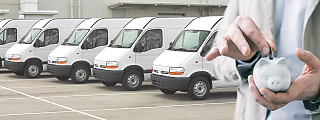





The total cost of ownership (TCO) is a comprehensive financial analysis on the complete lifecycle of a capital purchase. It analyzes the expense of owning an asset by evaluating both its short-term purchase price and the long-term costs of operation.
While costs are usually itemized independently from one another on financial statements, an analysis of the total cost of ownership is common practice for business dealings. Companies and individuals should consider the total cost of ownership when choosing alternatives in purchasing decisions to invest in capital projects.
When did companies first begin analyzing total cost of ownership?
Analyzing the total cost of ownership has been a practice in business for the past few decades. In the mid-eighties, more companies started to acquire hardware and software IT solutions.
To validate these acquisitions, managers started analyzing the total cost of ownership after discovering that the long-term price of supporting the equipment and software could cost between five and eight times the initial purchase price. So, it was obvious that more time needed to be devoted to both understanding and managing these costs.
How to analyze the total cost of ownership
There are various components in the analysis of TCO. This financial estimate includes every phase of ownership: acquisition, operation, management and support, communication, training, end-user experience, cost of downtime, and other productivity losses. The components included in analyzing the TCO will depend on what the capital purchase is.
Let’s look at the various costs involved in the acquisition of a new computer system, for example. Expenses include prices of equipment (i.e. hardware) as well as software, installation, security costs, ongoing support, and future upgrades.
Then to operate with this new computer system might include something like a subscription or service cost. Furthermore, it might also include initial employee training, direct operator labor, and utility costs.
In addition to acquisition and operating costs, other expenses include personnel costs. Personnel costs consist of administrative staff, a workforce to support the equipment, and housing the equipment in operator facilities. And ongoing training or troubleshooting labor for maintenance purposes might be necessary.
TCO software
There are tools such as software applications that help you lower your total costs of ownership. For example, a fleet management solution like Webfleet can help you lower fuel costs by monitoring driver behaviour and fuel consumption. It helps you lower maintenance costs and reduces downtime with notifications on the general health of your vehicle and scheduled maintenance tasks. These are just a few ways in which a fleet management solution can help you lower the total cost of ownership.
Your consent is required
In this section, external content is being embedded from .
To display the content, your consent is required for the following cookie categories:
- Targeted Advertising
- Analytics & Personalization
- Essential
For further details, please refer to our privacy policy. If you are interested in how ###vendor_name### processes your data, please visit their privacy policy.












